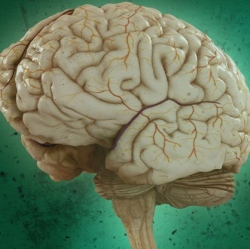
Recent studies have shown that social robots provide therapy (or co-therapy, where robots are used in combination with the efforts of a human expert) and potentially even help teach autistic children new skills. And when used in a clinical setting, these talking robots may even help diagnose autism earlier.
Most autistic children aren’t diagnosed with the disease until they are at least 3 years old. But studying eye movement in high-risk babies (those with an autistic family member) can lead to an earlier diagnosis. A sophisticated social robot with cameras for eyes could study such movement in an infant over periods of time to detect signs of autism.
In 2013, interest in social robotics grew when the University of Notre Dame published results from a study of 19 children with autism, which may be the largest trial to date for this technology. The researchers purchased a $14,000 talking robot, nicknamed Kelly, to coach autistic children to make eye contact or take turns talking.
Kelly is a Nao “humanoid” robot, developed by French parent company Aldebaran in collaboration with eight universities and robotics companies in the U.K., France, Switzerland, Greece, and Denmark. The results were promising: Social robots do seem to help autistic children.
